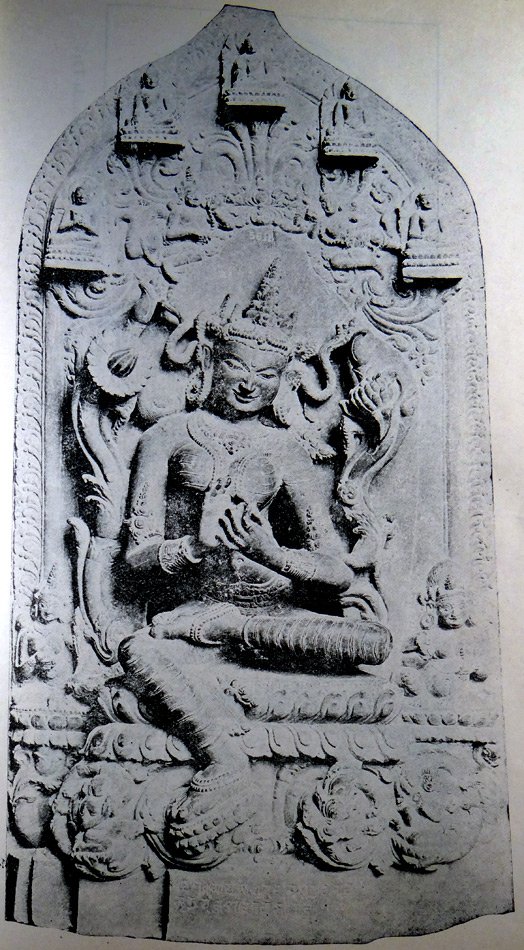The Indian Buddhist Iconography
by Benoytosh Bhattachacharyya | 1958 | 51,392 words | ISBN-10: 8173053138 | ISBN-13: 9788173053139
This page contains an iconography image of Emanations of Amoghasiddhi: Mahashri Tara and represents figure 169 of the book Indian Buddhist Iconography, based on extracts of the Sadhanamala English translation. These plates and illustrations represent either photographs of sculptures or line-drawing reproductions of paintings or other representations of Buddhist artwork.
Figure 169 - Emanations of Amoghasiddhi: Mahāśrī Tārā

Fig. 169: Mahāśrī Tārā
(Indian Museum)
Colour: green;
Arms: two;
Mudrā: vyākhyāna;
Companion: four.
Another deity emanating from the Dhyāni Buddha Amoghasiddhi of green colour is Mahāśrī Tārā “Saviouress of Great Beauty”. A single Sādhana in the Sādhanamālā describes her form along with her four companion deities, such as Ekajaṭā, Aśokakāntā Mārīcī, Ārya-Jāṅgulī and Mahāmāyūrī.
The mantra of the central deity Mahāśrī Tārā is given in the Sādhana as:
“Oṃ Tāre Tuttāre Ture dhanaṃ dade Svāhā”.
The mantra evidently makes her a goddess of wealth, and as such the deity must have been worshipped by the Tantric Buddhists, According to a further statement she sits in the Rājalīlā-āsana or the pose of princely ease.
Only one statuette of the deity has been discovered so far. It is now in the Indian Museum, Calcutta ( Fig. 169 ), In conformity with the Sādhana the principal deity Mahāśrī Tārā is shown as one-faced and two-armed exhibiting the Vyākhyāna or the Dharmacakra-mudrā. There are two night lotuses on either side. The principal deity sits in the Rājalīlā pose on a lion-throne and bears on her crown the miniature figure of Amoghasiddhi with the Abhaya-mudrā.
To her left is the fierce figure of Ekajaṭā, sitting in the Ardhaparyaṅka attitude and holding the Kartri and the Kapāla in the two hands. She has a protruding belly, garment of tiger-skin, and she bears a wrathful demeanour which is clear on the stone.
To her right similarly, sits Aśokakāntā Mārīcā who wears a bejewelled crown, and carries the Vajra and the Aśoka flower according to the direction of the Sādhana.
The statuette also depicts Ārya-Jāṅgulī towards the extreme left of the deity and shows the snake and the Varada-mudrā in accordance with the direction of the Sādhana.
The statuette also includes the small figure of Mahāmāyūrī to the extreme right of the principal goddess. She shows the peacock’s feathers and the Varada-mudrā.
The Indian Museum image seems to be the only image representing Mahāśrī Tārā where the sculpture does not deviate even a little from the description given in the Sādhanamālā.
